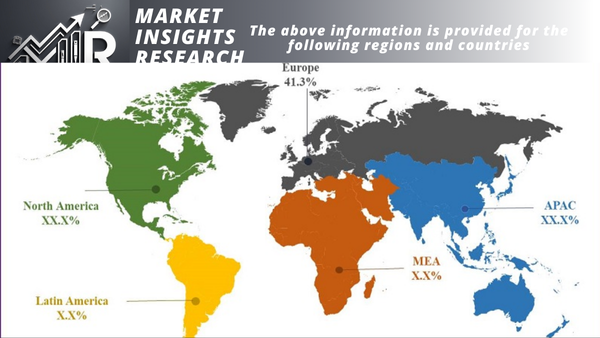Companion Diagnostics Market
Companion Diagnostics Market Size By Product (Instruments, Consumables, Services), By Disease Indication (Breast cancer, Lung cancer, Colorectal Cancer, Skin cancer), By Technology (Immunohistochemistry, In Situ Hybridization, Polymerase Chain Reaction, Genetic Sequencing), By End-use (Hospitals, Diagnostic Laboratories), Industry Analysis Report, Regional Outlook, Application Potential, Competiti
Published Date: May - 2025 | Publisher: MIR | No of Pages: 240 | Industry: Animal Health and Nutrition | Format: Report available in PDF / Excel Format
View Details Buy Now 2890 Download Free Sample Ask for Discount Request CustomizationCompanion Diagnostics Market Size
Companion Diagnostics Market size exceeded USD 2 billion in 2018 and is poised to grow at over 19% CAGR between 2019 and 2025. Growing incidences of adverse drug reactions will prove beneficial for the market growth.
To get key market trends
Companion diagnostics assist their prevention by helping clinicians to identify patients more likely to have side effects from specific drugs. Companion diagnostics improves clinical results and helps to modify medication therapy to prevent negative effects.
| Report Attribute | Details |
|---|---|
| Base Year | 2018 |
| Companion Diagnostics Market Size in 2018 | 2 Billion (USD) |
| Forecast Period | 2019 to 2025 |
| Forecast Period 2019 to 2025 CAGR | 19% |
| 2025 Value Projection | 6.5 Billion (USD) |
| Historical Data for | 2014 to 2018 |
| No. of Pages | 110 |
| Tables, Charts & Figures | 110 |
| Segments covered | Product, Disease Indication, Technology, End-use and Region |
| Growth Drivers |
|
| Pitfalls & Challenges |
|
What are the growth opportunities in this market?
Increasing prevalence of cancer across the globe will boost the companion diagnostics market demand. Cancer patients react differently to variety of drugs and consequently need personalized therapy. Companion diagnostics provide accurate information about the drug’s effectiveness and safety in different patient group.
Companion Diagnostics Market Analysis
Up to 2025, the segment of consumables products in the companion diagnostics market is expected to show about 19% increase rate. Included in the segment are reagents and media needed to evaluate patient response to the medicine. Consumables have high replacement rate and are usually purchased unlike tools. They are bought in great numbers to meet growing need for companion diagnostics.
In 2018 the value of the service segment exceeded USD 160 million. By means of outsourcing, healthcare facilities can focus on main operations. Furthermore, firms offering companion diagnostics services have field knowledge and hence produce better quality data. Demand for companion diagnostics services will increase over the next years as they allow healthcare practitioners to offer patients with tailored drugs excellent quality therapy.

Learn more about the key segments shaping this market
In 2018, category of skin cancer represented for more than 13% of companion diagnostics market share. Rising demand for companion diagnostics tests as skin cancer caused by negative effects of cosmetics and too much exposure to dangerous sun rays becomes more common. According to CDC, the U.S. alone recorded 82,476 melanoma cases in 2016. Helping doctors treat skin cancer patients is much enhanced by companion diagnostics.
From 2019 until 2025, the segment application for lung cancer is expected to show more than 18.5% increase. Rising cancer prevalence all throughout the world is blamed for considerable increase. The Centers for Disease Control and Prevention estimate that in 2016 the United States recorded 218,229 cases of lung and bronchus cancer. Treatment of lung cancer depends much on the choice of efficient therapy made early on. Companion diagnostics helps to choose treatment specifically based on personal need. Moreover, it helps to prevent negative reactions all during the course of treatment.
Segment size in in situ hybridization technique in the companion diagnostics industry reached USD 400 million in 2018. Amplifiable DNA is used in situ hybridization as numerous variant producing reporter molecule. Parallel study of several proteins involved in tissues and cells made feasible by in situ hybridization allows one to link protein complex among individual cells. Either detect amplification in breast cancer or fusion in non-small-cell lung cancer, in situ hybridization technology is extensively applied. With well-made probes, this technology is straightforward and easy to use; it can identify known and new fusion kinds.
By 2025, section of genetic sequencing technologies is expected to have improvements of 20%. For clinical and academic applications as well as for identifying undiscovered genes for microbiome, cancer driver genes, genetic illnesses, Next Generation Sequencing (NGS) is applied. Next generation sequencing techniques with technological advanced capabilities help to discover fusions, mutations, microsatellite instability, copy number changes, tumor mutation load, etc. These characteristics of companion diagnostics based on genetic testing help to identify individual unique genetic structures.
Because of growing patient pool resulting from high frequency of chronic diseases, hospitals commanded roughly 40% companion diagnostics market share in 2018. Modern companion diagnostics used in hospitals help doctors to treat patients with excellence. Availability of upgraded infrastructure and qualified experts in hospitals raises patient's inclination toward them.
End-use segment growth in diagnostic labs on the market would be about 19.5% in 2019–2020. Rising knowledge of the advantages of early diagnosis has driven demand for accurate and improved diagnostic tests. Furthermore, government support for diagnostic tests meant to reduce the load of these disorders would help the segment development. Furthermore, the availability of technologically advanced tools for the diagnosis of particular kind of cancer would help medical practitioners to give patients correct information.
With rising elderly population vulnerable to chronic diseases and increasing prevalence of these disorders guiding the forecast timeline, North America companion diagnostics market size is expected to rise at more than 18% CAGR. Furthermore, high disposable income and cost-effectiveness for companion diagnostics tests will have a major favorable effect on the North American market growth patterns.

Learn more about the key segments shaping this market
Asia Pacific market revenue is anticipated to witness around 20.5% growth through 2025. Government initiatives for providing effective treatment to cancer patients will propel the regional market expansion. Furthermore, companies are taking initiatives and doing necessary alliances to demonstrate usefulness of companion diagnostics for curbing overall healthcare expenditure.
Companion Diagnostics Market Share
Some of the notable players operating in the companion diagnostics market are
- Roche
- Pfizer
- Merck
- Astra Zeneca
- Bristol Myers Squibb
- Amgen
- Biogen
- Eli Lilly
- Myriad Genetics
- Johnson & Johnson
- Becton
- Dickinson and Company
- Abbott
Industry players are adopting strategies such as new product launches, collaborations and mergers and acquisitions to grab high revenue share.
The companion diagnostics market research report includes in-depth coverage of the industry with estimates & forecast in terms of revenue in USD million from 2014 to 2025, for the following segments
Click here to Buy Section of this Report
Market, By Product
- Instruments
- Consumables
- Services
Market, By Disease Indication
- Breast cancer
- Lung cancer
- Colorectal cancer
- Skin cancer
- Others
Market, By Technology
- Immunohistochemistry
- In Situ Hybridization
- Polymerase Chain Reaction
- Genetic Sequencing
- Others
Market, By End-use
- Hospitals
- Diagnostic laboratories
- Others
The above information is provided for the following regions and countries
- North America
- U.S.
- Canada
- Europe
- Germany
- UK
- France
- Italy
- Spain
- Asia Pacific
- India
- China
- Japan
- Australia
- Latin America
- Brazil
- Mexico
- Middle East & Africa
- South Africa
- Saudi Arabia
Related Reports
- Pet Monitoring Camera Market - By Product (Interactive Cameras, Standalone Cameras), By Distribution Channel (Online, Of...
- Pet Mobility Aids Market – By Product (Wheelchairs, Harnesses & Slings, Splints & Braces, Ramps & Steps, Prosthetics),...
- North America Seasoning Market Size - By Type (Oregano, Paprika, Ginger, Cinnamon, Cumin, Turmeric, Garlic, Cardamom, Co...
- Veterinary Endoscopes Market – By Product Type (Flexible [Video, Fibre-optic], Rigid), Procedure Type (Gastroduodenosc...
- Pet Wearable Market Size - By Product (Smart Collar, Smart Vest, Smart Harness, Smart Camera), By Technology (RFID Devic...
- Swine Artificial Insemination Market – By Product & Service (Semen {Fresh, Frozen}, Insemination Instruments {Catheter...
Table of Content
-
Introduction
1.1 Market Overview
1.2 Market Definition
1.3 Market Dynamics -
Market Segmentation
2.1 By Types
2.1.1 Genetic Tests
2.1.2 Protein-based Tests
2.1.3 Others -
Applications
3.1 Oncology
3.2 Cardiovascular Diseases
3.3 Neurological Disorders
3.4 Infectious Diseases
3.5 Others -
Key Players
4.1 Company A
4.2 Company B
4.3 Company C
4.4 Others -
Regional Analysis
5.1 North America
5.2 Europe
5.3 Asia-Pacific
5.4 Latin America
5.5 Middle East & Africa -
Market Trends and Opportunities
-
Challenges and Restraints
-
Future Outlook
-
Conclusion
Will be Available in the sample /Final Report. Please ask our sales Team.
FAQ'S
For a single, multi and corporate client license, the report will be available in PDF format. Sample report would be given you in excel format. For more questions please contact:
Within 24 to 48 hrs.
You can contact Sales team (sales@marketinsightsresearch.com) and they will direct you on email
You can order a report by selecting payment methods, which is bank wire or online payment through any Debit/Credit card, Razor pay or PayPal.
Discounts are available.
Hard Copy
